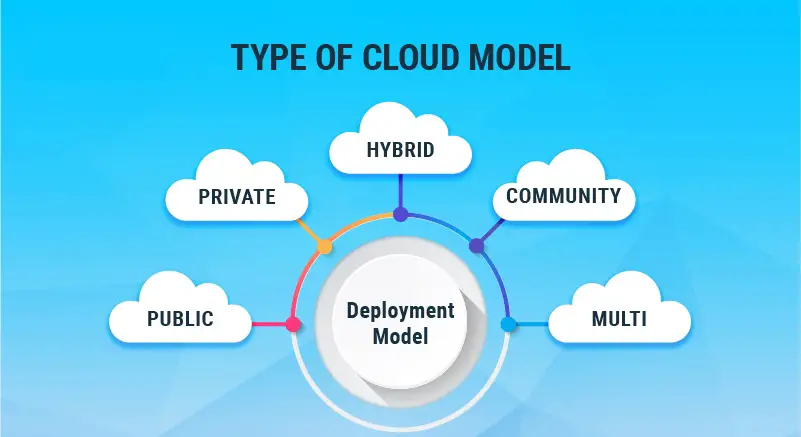In today’s business world, cloud computing has become increasingly popular as an alternative to traditional on-premises deployment models. As a result, organizations are beginning to evaluate the benefits and drawbacks of cloud deployment strategies. This article will critically evaluate the advantages and disadvantages of cloud deployment strategies and explore how they can impact an organization’s business operations.
1. Introduction
Cloud deployment is the process of delivering applications and services over the internet. It is an alternative to traditional on-premises deployment models, where organizations manage their own hardware and software. With cloud deployment, organizations can reduce their IT infrastructure costs and improve their operational efficiency. However, as with any technology, there are advantages and disadvantages to cloud deployment strategies that must be evaluated before making a decision.
2. What is Cloud Deployment?
Cloud deployment refers to the delivery of computing resources, such as servers, storage, databases, and applications, over the internet. There are three primary cloud deployment models:
- Public cloud: Services are provided by third-party service providers and are accessible over the internet.
- Private cloud: Services are provided by an organization’s own IT department and are only accessible within the organization’s own network.
- Hybrid cloud: A combination of public and private cloud services are used to create a hybrid cloud deployment.
3. Advantages of Cloud Deployment Strategies
3.1 Scalability
One of the main advantages of cloud deployment strategies is scalability. With cloud deployment, organizations can easily scale their computing resources up or down based on their needs. This means they can quickly respond to changes in demand without having to invest in additional hardware or software.
3.2 Cost Savings
Cloud deployment can also result in cost savings. Organizations can reduce their IT infrastructure costs by using cloud services instead of maintaining their own hardware and software. This can include savings on hardware, software licenses, and maintenance costs. In addition, cloud service providers typically charge based on usage, which means organizations only pay for what they use.
3.3 Accessibility and Mobility
Cloud deployment also offers increased accessibility and mobility. With cloud services, users can access applications and data from anywhere with an internet connection. This means employees can work remotely, increasing productivity and flexibility.
3.4 Reliability and Availability
Cloud deployment can also improve reliability and availability. Cloud service providers typically offer high levels of availability and uptime, which means organizations can rely on their services to be available when they need them.
4. Disadvantages of Cloud Deployment Strategies
4.1 Security and Privacy Concerns
One of the main disadvantages of cloud deployment strategies is security and privacy concerns. Organizations must entrust their sensitive data to third-party service providers, which can increase the risk of data breaches and unauthorized access.
4.2 Dependency on Service Providers
Another disadvantage of cloud deployment strategies is dependency on service providers. Organizations must rely on their service providers to maintain their services and ensure their availability. This means organizations have less control over their IT infrastructure and must trust their service providers.
4.3 Integration Challenges
Cloud deployment strategies can also present integration challenges. Organizations must ensure that their existing applications and systems can integrate with cloud services. This can be a complex process that requires careful planning and execution.
4.4 Limited Control Over the Infrastructure
Cloud deployment can also result in limited control over the infrastructure. Organizations must rely on their service providers to manage their infrastructure, which can limit their ability to customize and configure their IT environment.
5. Hybrid Cloud Deployment Strategies
Hybrid cloud deployment is a combination of public and private cloud services. This can provide organizations with the benefits of both deployment models, such as increased scalability and flexibility, while also allowing them to maintain control over their sensitive data.
6. Choosing the Right Cloud Deployment Strategy
Choosing the right cloud deployment strategy depends on several factors, such as an organization’s budget, security requirements, and business needs. Organizations must carefully evaluate their options and select a deployment model that aligns with their goals and objectives.
7. Cloud Deployment Best Practices
To ensure a successful cloud deployment, organizations should follow best practices, such as:
- Conduct a thorough evaluation of service providers
- Develop a migration plan
- Monitor performance and usage
- Ensure compliance with industry regulations
- Establish a disaster recovery plan
8. Case Studies
Several organizations have successfully deployed cloud strategies, resulting in increased efficiency and cost savings. For example, Netflix uses Amazon Web Services to deliver its streaming video service, which has resulted in significant cost savings and improved scalability.
9. Conclusion
Cloud deployment strategies offer several advantages, such as increased scalability, cost savings, and accessibility. However, they also present challenges, such as security and privacy concerns, dependency on service providers, integration challenges, and limited control over the infrastructure. To ensure a successful cloud deployment, organizations must carefully evaluate their options, follow best practices, and select a deployment model that aligns with their business needs.
10. FAQs
- What are the primary cloud deployment models?
- How can cloud deployment result in cost savings?
- What are the security concerns associated with cloud deployment?
- What is hybrid cloud deployment?
- What are some best practices for cloud deployment?
What are the types of cloud deployment models?
There are three primary cloud deployment models: public cloud, private cloud, and hybrid cloud.
- Public cloud refers to services offered by third-party providers over the internet, which are available to anyone who wants to use them. Examples include Amazon Web Services, Microsoft Azure, and Google Cloud Platform.
- Private cloud refers to cloud infrastructure that is dedicated to a single organization. This can be located on-premises or hosted by a third-party provider. Private cloud offers increased control and security but requires more resources and maintenance.
- Hybrid cloud is a combination of public and private cloud services. This allows organizations to maintain control over their sensitive data while taking advantage of the scalability and flexibility offered by public cloud services.
